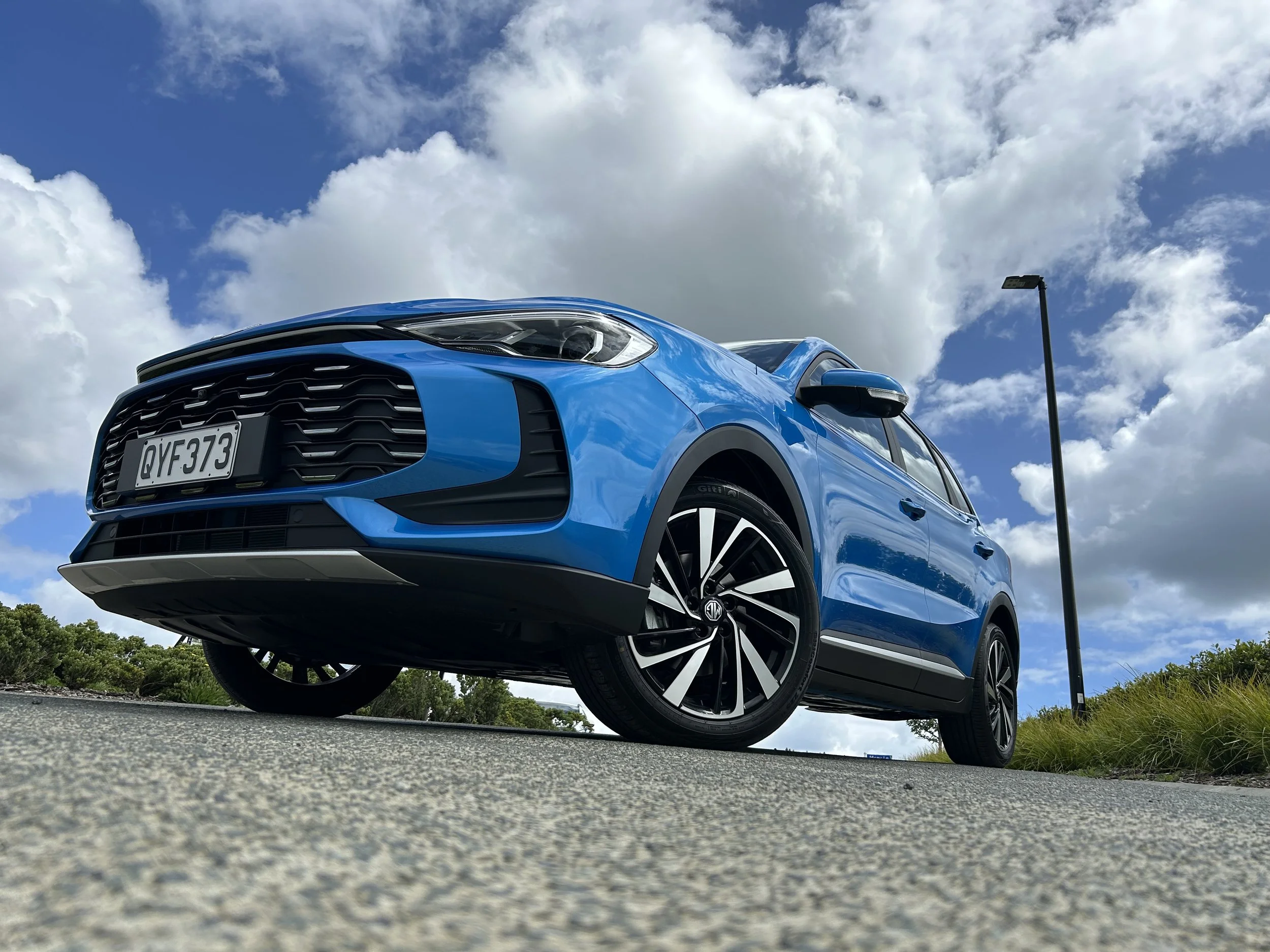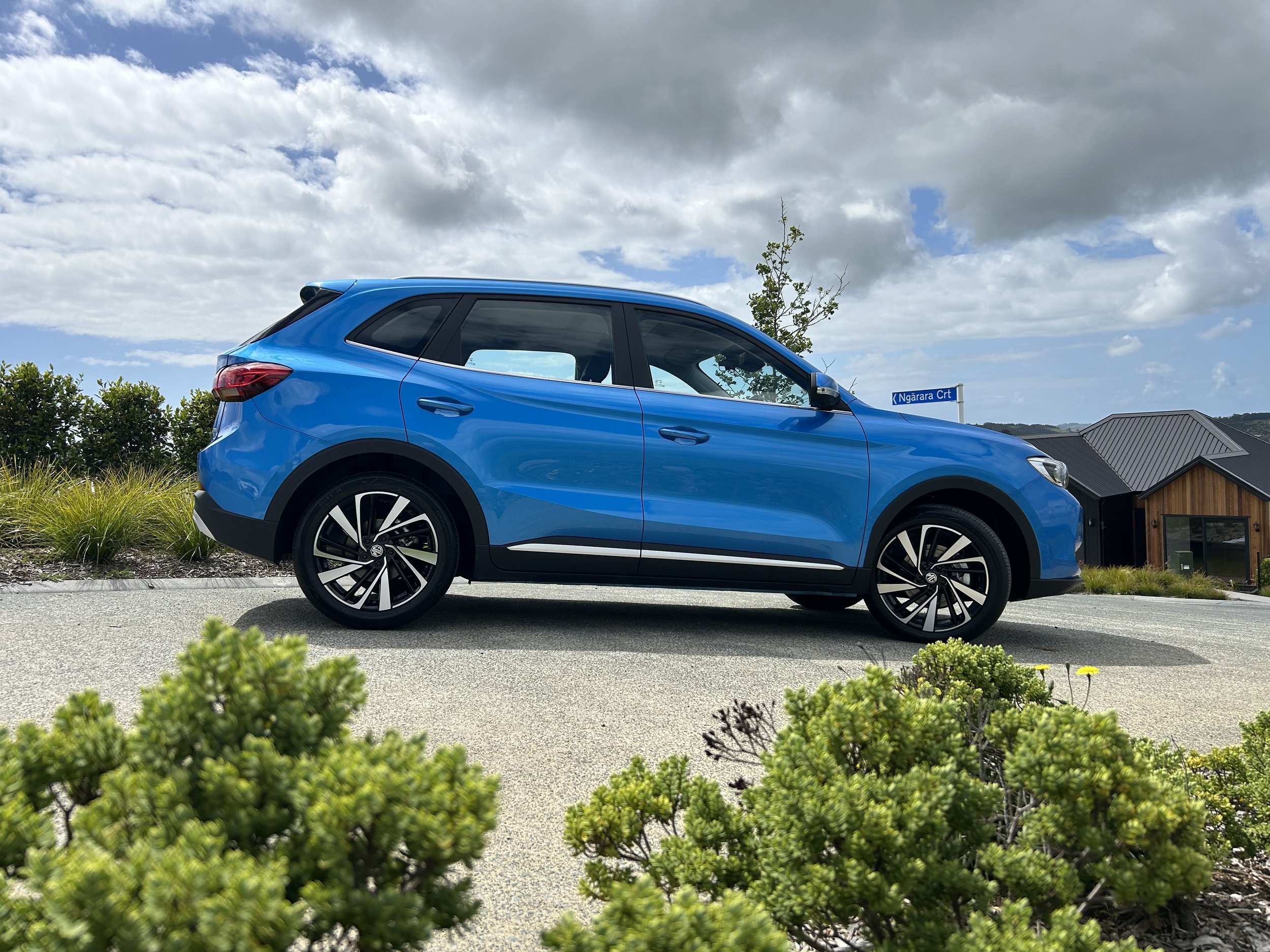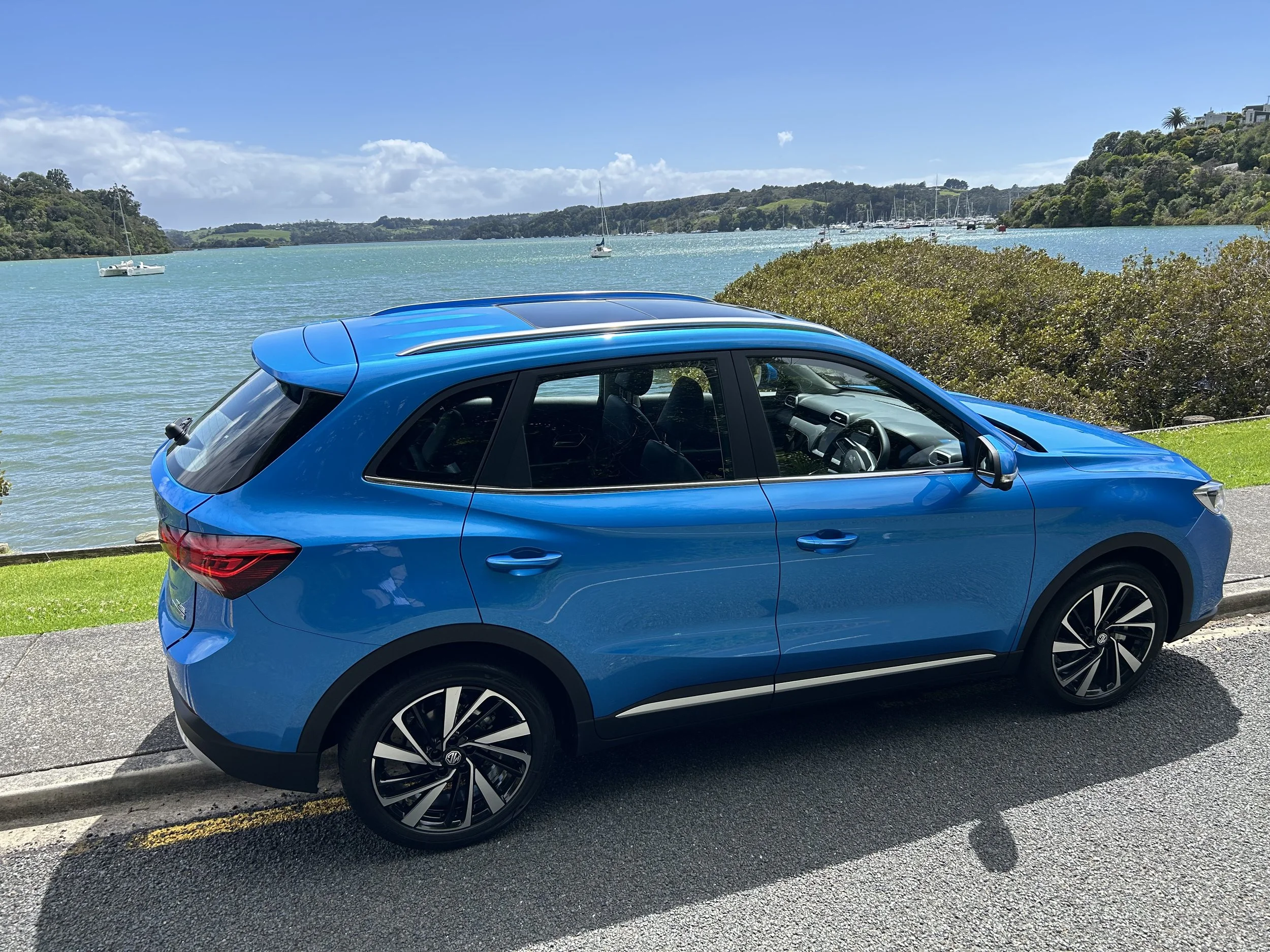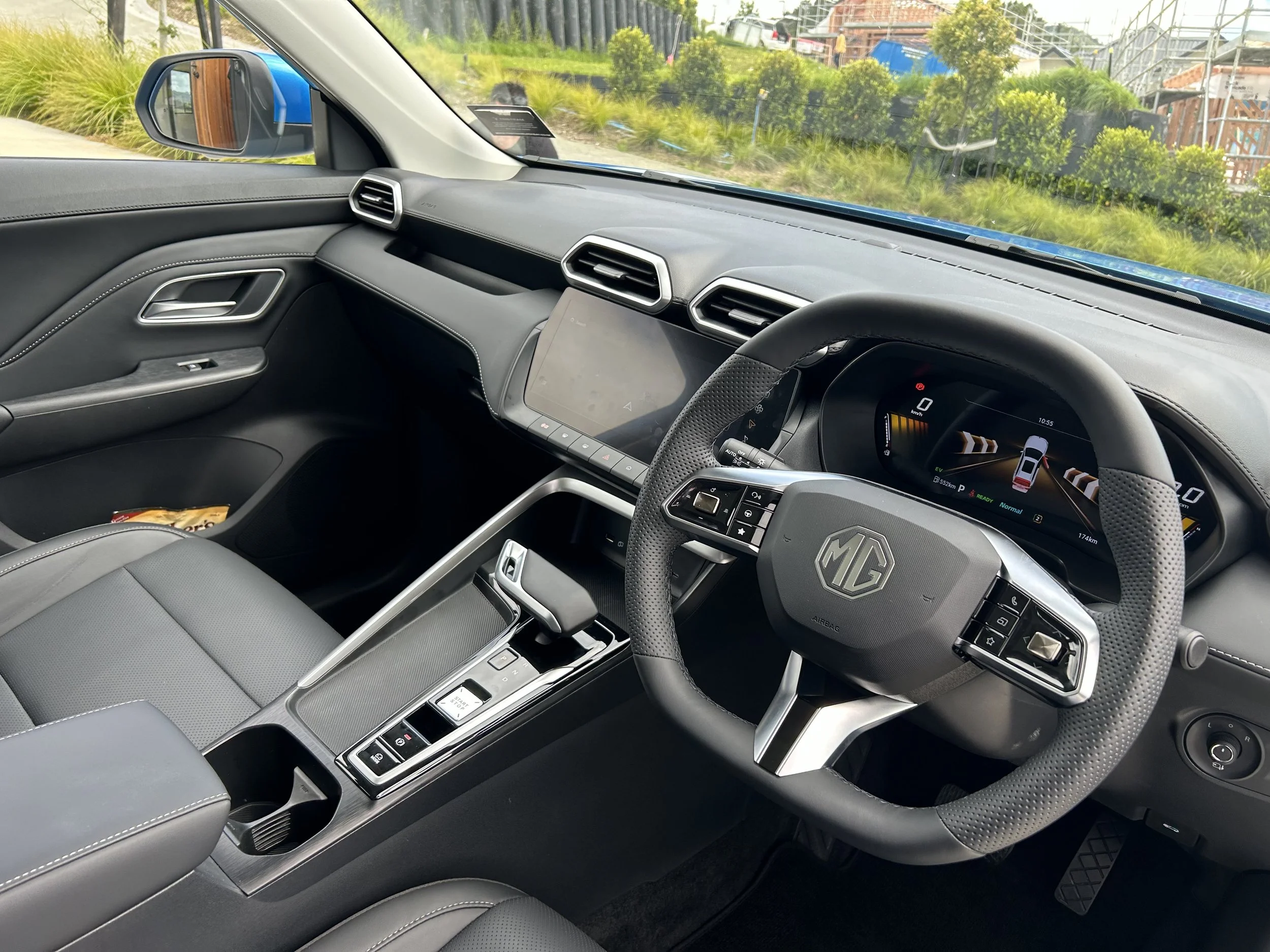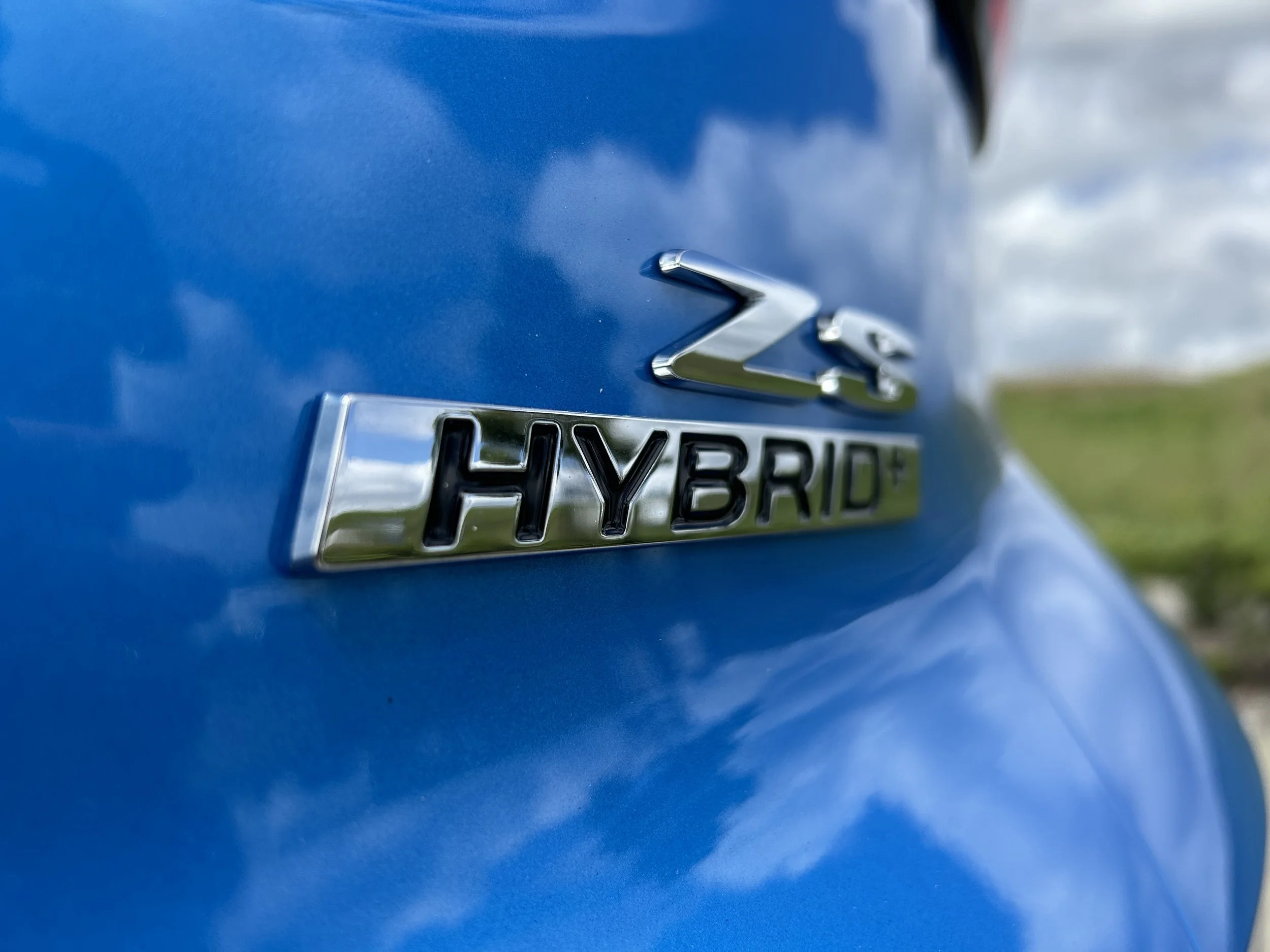MG ZS Hybrid Plus first drive: New drivetrain adds dollars, makes sense
/As much as petrol-electrics without plugs are but a first step into the future, in the ‘now’ they’re the top consumer choice. Given that, this one seems well-timed.
WHAT price progress for the all-new generation of the car that introduced an old-school British brand as a new-age, primarily low-cost choice from China?
On one hand, the MG ZS compact sports utility is a touch less ‘budget’ … if just for now. As it presently shows, the least expensive version of the new is pricier than the flagship edition of its petrol predecessor.
On the other? With the first-to-show top-end editions of the second-generation comes real potential for reducing running cost spend.
By taking a new technical direction this car slots neatly into a New Zealand market sweet spot.
As much as the car itself retains familiar ambience, MG executives argue comparing the new ZS to the old model is not "apples to apples” because, they say, the latest version is all new and "the only thing that's the same in the and the old is just the name.”
Fair call? It seems so. Beyond getting a larger body and an all-new chassis, there’s also a massive in technology, including under the bonnet.
Having presented in its first generation format as a full petrol car in 2019, subsequently joined a year later by a totally electric derivative, the ZS in its new shape is now fronting up as something different again - as a petrol-electric hybrid.
Pure petrol editions are adding in from early next year. And a new wholly electric version? Yes, but not as a ZS. That particular car as we’ve known it has been axed in favour of a standalone EV, likely to show around June.
Going ‘mild’ hybrid isn’t particularly planet-saving - in case you had forgotten, this is still a petrol-prioritised tech - yet in this sales climate is a smarter move that trying to sell petrol electric with ability to replenish off mains power.
Inasmuch as electric (or, at least, not burning fossil fuel) is the clear and obvious future for motoring, fact is the plug-in hybrid and full electric sectors have been severely battered this year. We’ve by and large switched off to those. Whereas hybrids that sustain through self-fulfilment - that is, recharging as they go - have become the sole sector showing sales growth.
That trend hasn’t in itself saved the market. The year-on-year tally for 2024 will be sobering. So it’s hardly surprisingly any in-house volume target for ZS is not being shared.
Certainly, from an observers’ view, it’s hard to conceive the hybrid emulating the fully electric in its heyday; from launch that car reaped richly as the country’s cheapest new EV and really only lost its way when the newer, more advanced MG4 landed. Even so, until the market resumes its previous interest in fully battery-fed cars, having a hybrid seems a safer option.
What is being marketed as the ZS Hybrid Plus introduces the same hybrid powertrain that MG also offers in a physically smaller, but still platform-sharing product, the MG 3 that released earlier this year.
In MG 3, the new petrol-electric drivetrain carries a $4000 premium over pure petrol types.
Whether that gap also occurs for ZS once the petrol editions - conceivably in turbo and normally-aspirated choices - arrive is not being shared; that exercise is now being undertaken. All MG will say is that the petrols will be cheaper and that their intent is to continue to position the ZS overall as a value car, though whether they can return the nameplate to the $24,990 starting point held by the entry car this year is not clear.
Meantime, there are two ZS Hybrid variants, in the usual Excite and Essence trims, at $36,990 and $39,990 respectively. So, more than you’ve previously paid for a petrol, less than you can for the full electric.
That’s when considering full recommended retails. Do that and the cheapest hybrid is $2000 more than the priciest outgoing internal combustion engined edition, the ZST.
In reality, the gap is wider, because the last of ZSTs are subject to clearance pricing, down to $26,990. Which is the same money MG New Zealand asked this time last year for a base (Core) first gen type.
The fully electric, first gen ZS is still in stock. The Excite, Essence and Long Range formats are respectively selling for $40,990, $45,990 and $55,990. The Excite and Essence stickers are $9000 lighter than they were after a refresh two years ago.
As in the MG3, the ZS Hybrid powertrain combines a 75kW/128Nm 1.5-litre four-cylinder petrol engine with a 100kW/250Nm electric motor, 1.83kWh battery pack, and a three-speed 'hybrid transmission’.
MG claims combined outputs of 158kW and 465Nm – up from 155kW in the MG3, despite using largely the same components as the hatch.
Fuel consumption is rated on the WLTP scale at 5.2 litres per 100 kilometres in mixed driving and CO2 emissions of 115 grams per kilometre cited.
The ZS hybrid economy is 0.9L/100km shy of the MG 3, a difference likely down simply to weight difference, but it is nonetheless far more frugal and cleaner than any previous petrol. The champion of the previous range was the four-cylinder 1.5-litre CVT, with 7.7L/100km and 179g/100km, albeit from drinking 91 octane. The new hybrid demands 95 octane or higher.
The hybrid is also more powerful than the previous fastest ICE ZS, the 1.0-litre three-cylinder turbo, which had 115kW/230Nm (against 84kW/150Nm from the 1.5) and consumed fuel at a rate of 7.9L/100km.
The 0-100kmh acceleration time of 8.7 seconds makes the hybrid the fastest internal combustion ZS yet, though it is still beaten by the EV, for which 8.2s is claimed.
Full detail about the impending full petrol options in the new family is to be unwrapped, but it is known they are paired with a continuously variable transmission automatic, replacing the four-speed torque-converter auto found in the current non-turbo ZS Excite, and the six-speed torque-converter auto in turbocharged models.
Like MG 3, the new ZS also upgrades to deliver more advanced safety technology than the previous ZS had in its cheapest forms.
Both trim grades come with a suite of features as part of MG Pilot, which now includes lane keeping assistance, adaptive cruise control, alerts for if you are about to reverse out into traffic and blind spot monitoring. As in other MG models - indeed, as in all China-made cars - those no paying enough attention to follow distances, lane positioning and speed will risk reprimanding bings and bongs.
There’s no crash test result yet, though that might be close, as European NCAP is undertaking its processes now. There’s hope their assessment will be adopted by sister tester Australasian New Car Assessment Programme (ANCAP), our national auditor.
Will they be kind? ANCAP certainly wasn’t to the new MG3 in a test result recently released. It got three stars, the same so-so rating as its predecessor which had far fewer safety features. The outgoing ZS held a four star rating, but that score was issued in 2017, when the test was more lenient. MG for its part seems to find no reason why the new model shouldn’t be a five star scorer, as other new introduction, the HS, has been.
Driving amounted to a morning out, taking the car north of Auckland to Warkworth then return, the first part on motorway, the second also including some country roads. Just a taster, all in all, but enough to suggest it will be seen as a solid, if less than wholly spectacular, execution. MG’s ‘just enough’ ethos is very much evident in how it operates.
As is typical of hybrids, this one prioritises electric for driving off, but up to 30kmh - a higher speed than some. It thereafter mix and matches the petrol engine intrusion by judging driving conditions, driver inputs and so on.
The combination of this engine with an electric motor gives decent horsepower, and it can be a quick and fuss-free accelerator both off the line and when asked to overtake, but MG’s aim overall is to meet family user expectations. It figures the average owner will appreciate frugality and a smooth driving experience. The first will require a longer test, but in respect to the second, on the roads and at speeds I took, the point at which the engine did kick in was generally not easily discerned. only when hoofing it for a steep ascent did it get a touch aurally intrusive.
The ZS has three levels of regeneration sending energy from the brakes back into the battery. Each mode can take a bit of getting used to; from even this brief involvement it seems safe to say the highest level of regeneration is best kept for around town.
The ZS also has three driving modes; there’s a noticeable difference between ‘Sport’, ‘Normal’ and ‘Eco’, each changing the power delivery accordingly. It’s easy to imagine most people might choose to stick to ‘Normal’ mode, the default.
‘Sport’ isn’t outright hoonish, but potentially will lend more power than you really need when undertaking family duties; it was quite easy to squeal the tyres when turning out of an intersection.
The dynamic story has yet to be fully explored - again, I’ll look forward to working it out on roads I know well - but it does seem a relaxing drive. one matter that did arise in cruising along the motorway was the level of wind rustle that appeared to be generated by the wing mirrors. There’s more to be learned.
MG has increased the ZS’ size quite considerably, adding around 10cm to the length, as well as increasing the width and height slightly.
The new ZS measures 4430mm long, 1818mm wide and 1635mm tall, on a 2610mm wheelbase – 107mm longer overall, 9mm wider, 18mm lower and 25mm longer in wheelbase than the outgoing model.
The design of the ZS may still not be the most striking, but it does have a more muscular design now and a bit more sculpting. The headline is arguably the wide new grille, which is going to become a feature on MG products going forward. We’ve already seen it on the HS and the new MG3, and the ZS is simply following suit.
The interior is much more modern than before, with a touchscreen that’s more elegantly integrated into the dash and a digital instrument cluster behind the steering wheel.
There’s a minimalist feel with just a single bank of shortcut buttons beneath the screen and a few switches on the centre console and steering wheel. The gear selector has been designed; the old car’s rotary dial type has gone for a sharp-tipped winged hand shifter than could have come from a Klingon command ship or an Audi concept car.
It feels like a step up in quality with a new flattened steering wheel that’s heated and most of the major touch points having achieved more tactile materials; sure the ‘leather’ material covering the Essence seats clearly isn’t from a cow, but for a non-luxury pitch, it’s good enough. Also you don’t see as many cheaper plastics as in the old car.
What could it do better? From this first drive experience of the Essence, it’s still irksome that the steering wheel adjustment is poor for the tall and that the wheel itself maintains fiddly buttons. Lofty occupants of the front passenger seat will remain disappointed it still sits too high and lacks a height adjust meted the driver.
MG has put a lot of the interior focus on technology, placing a touchscreen in the centre of the dashboard and a digital instrument display behind the steering wheel.
Both screens have a reasonably high resolution and some relatively modern graphics, though the trial car’s centre touchscreen, which houses all the usual functions and the climate control system, seemed a bit laggy at times. Keyless entry is a feature but MG now also has an app allowing you to lock, unlock, pre-condition and locate your car.
Standard equipment in the Excite includes 17-inch alloy wheels, LED headlights, a 12.3-inch touchscreen
with Apple Carplay/Android Auto, a 7.0-inch instrument display, climate control, fabric seats, a 360-degree camera, and fulsome suite of safety technology. The Essence goes to 18-inch alloys, heated seats, a power-adjustable driver's seat, the leather-look upholstery and a panoramic sunroof.
So plenty of kit for your money. Lots of car, too. There’s no argument what was always a reasonably roomy choice in the compact SUV category is even more spacious now, thanks to the increased dimensions.
The extra length has allowed for more space in the back and big types will have no problem getting comfortable back there, as head- and legroom are more than sufficient.
The boot is competitively sized, too, at 433 litres rear seats up to 1457 litres when stowed. But it used to be even bigger. MG’s suggestion that the car among the bigger spaces in the compact category cleverly avoided revealing that the old car was even more commodious. Admittedly, the hit now - from placing hybrid gubbins under the floor - is modest.
Rivals? MG claims to be stumped by that one, citing that while the market is hardly short of mild hybrids - all the most relevant behind the Toyota badge - all those that directly price against theirs are much smaller cars (Yaris, for example), while those that are more comparable in size (Corolla Cross, RAV4) cost comfortably more.
The writer was a guest of MG NZ with travel, lunch and a gift provided.

